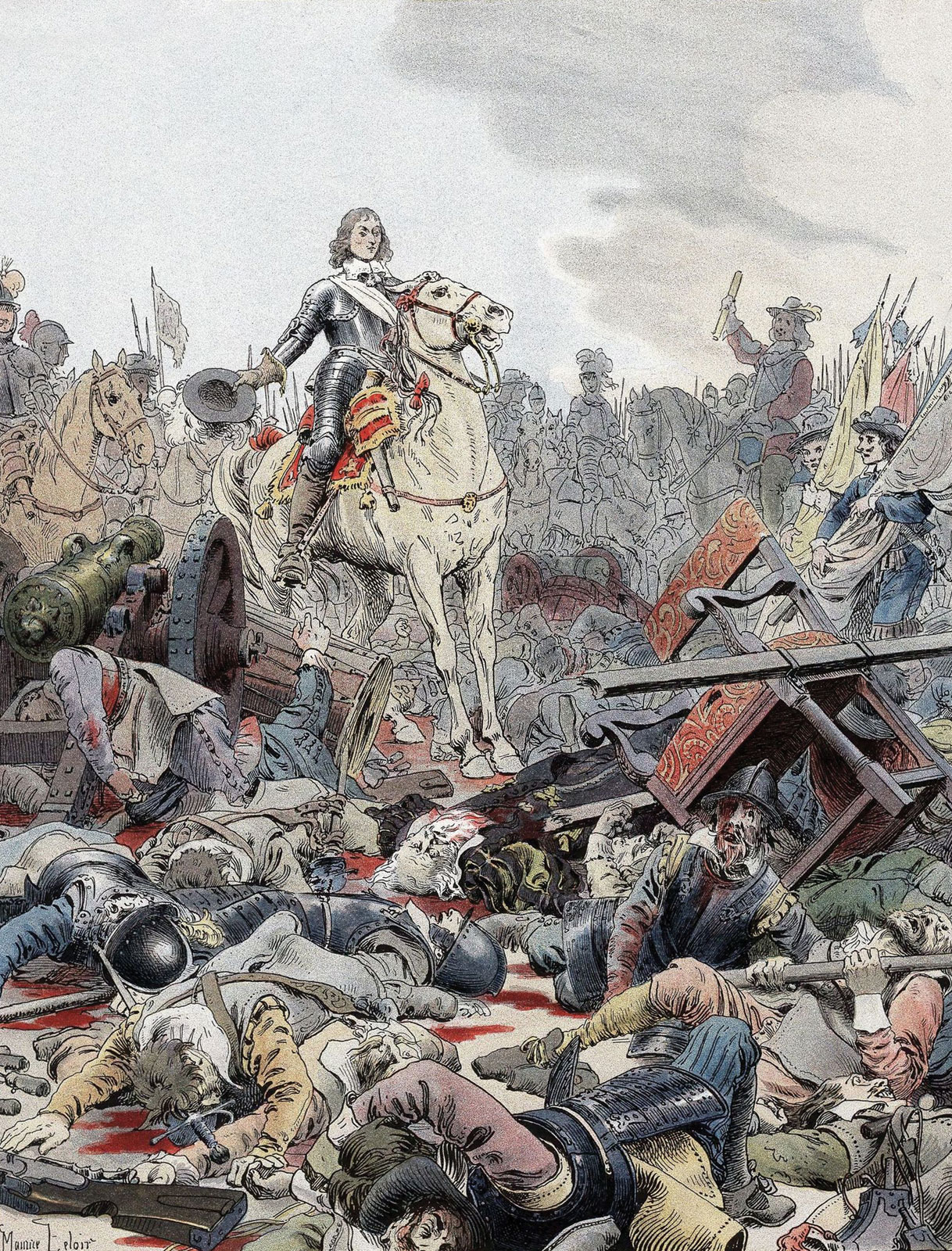19.5.1643 Battle of Rocroi
Categories: Years of war and revolution , Calendar

It was part of the Thirty Years' War. It ranked among the most important clashes because the weaker French army won against the stronger Spanish. The Battle of Rocroi took place in May 1643.
The Spanish army entered France in May 1643 and laid siege to Rocroi. A small fortress located north of Reims. The French, led by the Duc d'Enghien, advanced quickly to meet the enemy invasion. The Spanish forces were preferred to the more advanced line formations the French deployed in their usual tercios. Both sides placed cavalry on the flanks.
The battle itself began at dawn on 19 May. "At first it went better for the Spaniards, whose cavalry beat the riders on the enemy's left flank. However, the French cavalry on the right crushed their opponents. At this point, the Duke d'Enghien attacked the centre of the Spanish front, which allowed his infantry, exhausted by his attack, to be relieved," R. G. Grant describes the plot of the Battle of Rocroi in his book.
The resistance of the Spanish cavalry, who were sandwiched between the two attackers, collapsed and the surviving horsemen fled towards the swamp. The flight of the cavalry left eight thousand Spanish infantrymen surrounded with no hope of escape.
"Despite their heroic persistence (the French attacked them four times), the Spanish resistance was crushed by a combined artillery and cavalry attack by the French forces. However, the surrender of the tercios did not mark the end of the bloodshed. In the confusion, d'Enghien was shot. In retaliation, his men pounced on the helpless Spaniards, slaughtering nearly half their number. The defeat effectively marked the end of Spain's military power," Grant adds.
Overall, Spain was going through a bad time. Since 1640 it had faced rebellions in Catalonia and Portugal, and its last attempt to stop France ended in the defeat of Spanish troops at the Battle of Rocroi. The new First Minister, Duke Luis de Haro, concentrated all his remaining forces on holding the Spanish position, opting rather for a policy of peace negotiations. Spain recognized the rights of Protestants in the Empire and the Netherlands and eventually also accepted the humiliation of the conflict with France by the so-called Peace of the Pyrenees in 1659.
"The French monarchy was thus reaping the first fruits of its concentrated pressure on its Spanish neighbour in the early 1760s. The powerful minister Jules Mazarin defended the correctness of his course of action, despite the fact that it had led to expressions of discontent in the preceding years. Now he could finally triumph and demonstrate that the French monarchy was beginning to play a paramount role in Europe." write Drahomír Suchánek and Václav Drška in their book on church history.
Sources.
The article is included in categories: